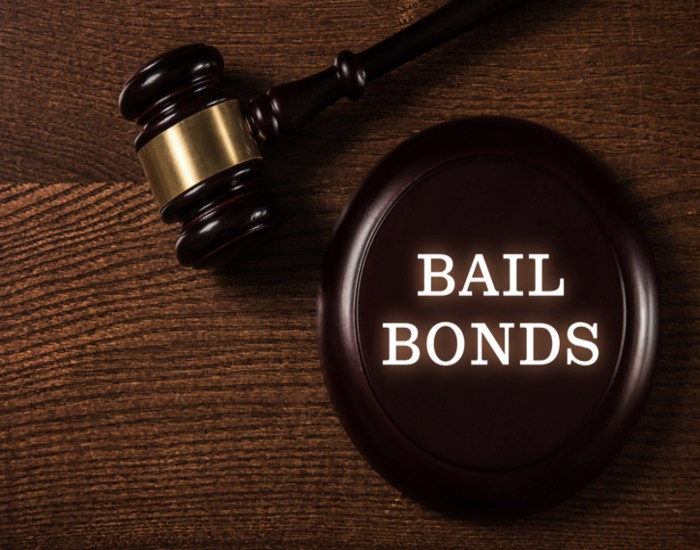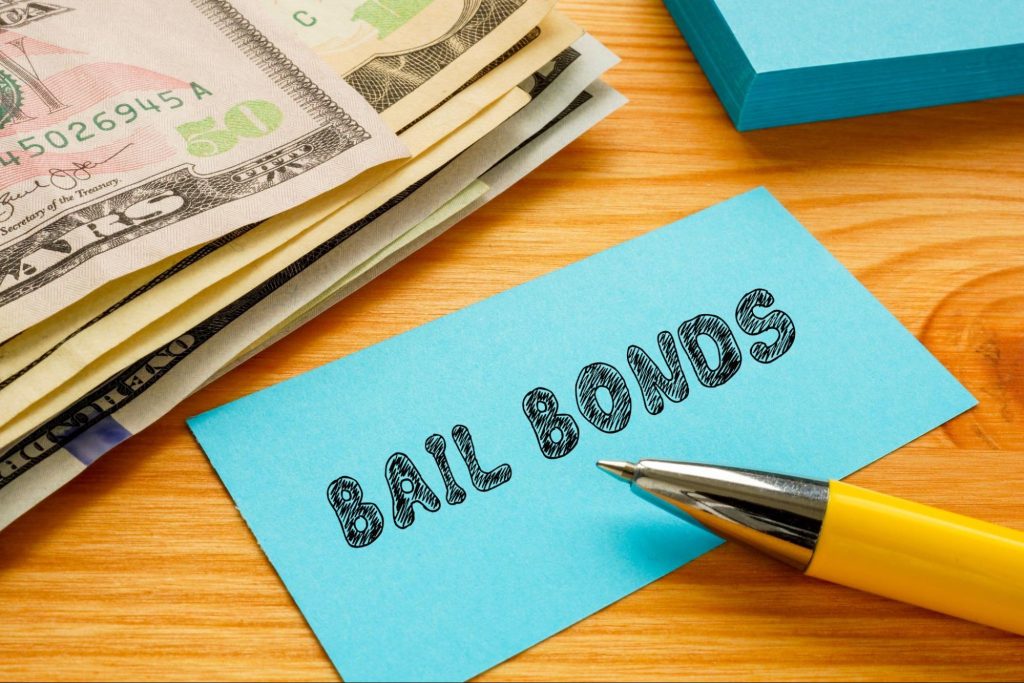The Secret to Effective Bail Bonds: Depend On and Transparency
Comprehending the Basics of Bail Bonds: What You Required to Know
Browsing the intricacies of bail bonds is a vital element of the legal system that can dramatically impact the accused's trip with court proceedings. The complexities of exactly how bail bonds operate, the numerous types available, and the essential considerations in picking a trusted bail bondsman can be daunting.
What Is Bail?
Bail is an economic setup that enables a specific accused of a criminal activity to be released from safekeeping while waiting for trial. The main purpose of bail is to make sure that the defendant appears for future court process (Los Angeles Bail Bondsman). Usually established by a judge, the bail amount differs depending on the nature of the criminal offense, the accused's criminal background, trip risk, and other essential factors
When bail is given, the implicated or a rep should pay a specified sum, which may remain in money or with a bail bond. Sometimes, bail can be denied completely, especially for serious offenses or if the suspicious poses a significant risk to public security. The idea of bail is rooted in the assumption of virtue, enhancing the idea that individuals ought to not be penalized prior to a sentence.

Recognizing Bail Bonds
A bail bond is an economic tool that facilitates the release of an implicated individual from custodianship, working as an assurance for their look at future court dates. This plan allows defendants to keep their flexibility while awaiting trial, decreasing the concerns related to incarceration. The bail bond process normally involves a third-party firm, called a bond bondsman, that gives the essential funds to the court in support of the implicated.
Bail bonds come in various forms, consisting of guaranty bonds, building bonds, and money bonds, each with unique requirements and implications. Guaranty bonds, the most common kind, need a superior payment, usually a percent of the overall bail quantity, which is non-refundable. On the other hand, a building bond includes utilizing real estate as collateral, while cash money bonds demand the full bail amount to be paid in advance.
Comprehending the subtleties of bail bonds is vital for defendants and their family members. It is necessary to understand the possible financial effects, including costs and responsibilities to the bail bondsmansman, as well as the legal responsibilities connected to ensuring court looks. Understanding of these elements aids in making educated decisions throughout a tough time.
Just How Bail Bonds Work
The process of securing a bail bond normally entails several essential steps that make sure the accused can restore their flexibility while awaiting trial. The private or their representative get in touches with a bail bondsman, who examines the case and the connected dangers. The bondsman will require info about the implicated, consisting of the charges, the bail amount established by the court, and any relevant personal information.
When the bail bondsman concurs to give the bond, the charged or their rep needs to pay a non-refundable charge, typically a portion of the overall bail amount. This cost makes up the bail bondsman for handling the monetary risk of guaranteeing the accused appears in court. In some cases, collateral might likewise be needed, such as building or useful possessions, which offers as safety and security for the bond.
After the fee and any kind of security are organized, the bondsman click over here sends the required paperwork to the court. Upon authorization, the bail is posted, and the charged is launched from protection. It is crucial for the accused to abide by all court days and conditions, as failing to view it do so can result in the forfeiture of the bond and possible legal repercussions.
Kinds Of Bail Bonds
Different types of bail bonds are available to match different circumstances and requirements. The most typical type is the surety bond, where a bondsman assurances settlement of the full bail amount to the court for a non-refundable charge, typically around 10% of the bail. This arrangement enables offenders to protect their release without paying the entire bail upfront.
Another kind is the cash bond, which needs the defendant or a co-signer to pay the full bail quantity in cash directly to the court - Bail Bonds. This choice is usually chosen for reduced bail amounts, as it makes sure the cash is returned upon the offender's appearance at all court proceedings
Home bonds involve the use of property as collateral. In this case, the court puts a lien on the property, which can be forfeited if the accused falls short to show up.
Lastly, federal bail bonds are especially made for federal cases, commonly entailing greater quantities and additional complexities. Comprehending these different bail bond kinds is critical for offenders and their families in making informed decisions during a challenging time.
Choosing a Bail Bondsman
When selecting a bond bondsman, it is crucial to consider several key elements that can impact the overall experience and outcome. Assess the bondsman's credibility by researching on-line testimonials and acquiring referrals from relied on resources. A trusted bail bondsmansman will have a history of professionalism and reliability and successful instances.

A lot of bail bondsmen charge a non-refundable cost, commonly around 10% of the bail amount. Openness in pricing is a characteristic of a credible bail bondsman.
Final Thought
In summary, understanding the fundamentals of bail bonds is vital for people associated with the legal system. Bail acts as a monetary guarantee of court appearance, while numerous types of bail bonds accommodate various circumstances. Recognizing the operational systems of bail bonds and choosing a reliable bail bondsmansman can significantly affect the total experience. An extensive evaluation of offered alternatives guarantees educated decision-making, ultimately helping with a smoother navigating through the complexities of the lawful procedure.
The ins and outs of just how bail bonds run, the various types offered, and the essential factors to consider in selecting a respectable bail bondsman can be discouraging. The bail bond procedure typically involves a third-party company, understood as a bail bondsman, who supplies the needed funds to the court on part of the charged.
The most usual kind is the surety bond, where a bail bondsman warranties payment of the complete bail quantity to the court in exchange for a non-refundable charge, normally around 10% of the bail. Bail offers as an economic guarantee of court look, while numerous kinds of bail bonds provide to various scenarios. Recognizing the functional systems of bail bonds and selecting a respectable bail bondsman can considerably influence the overall experience.